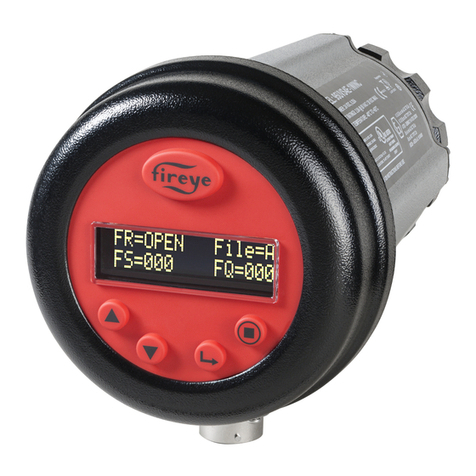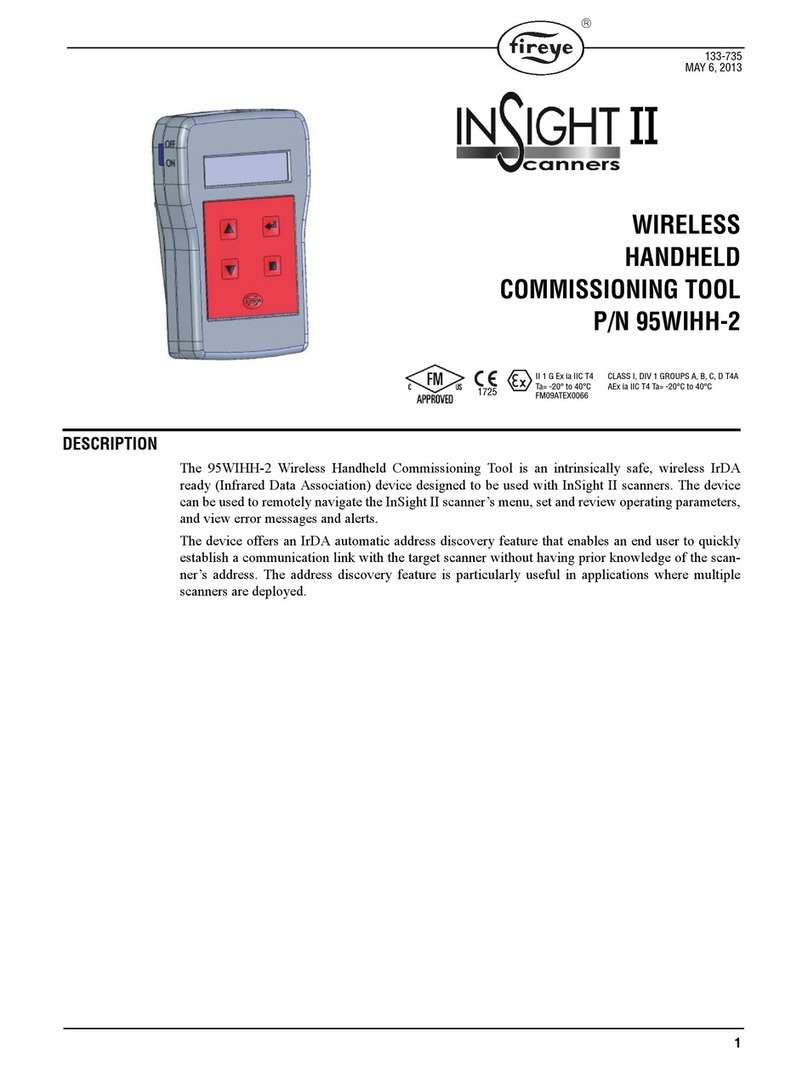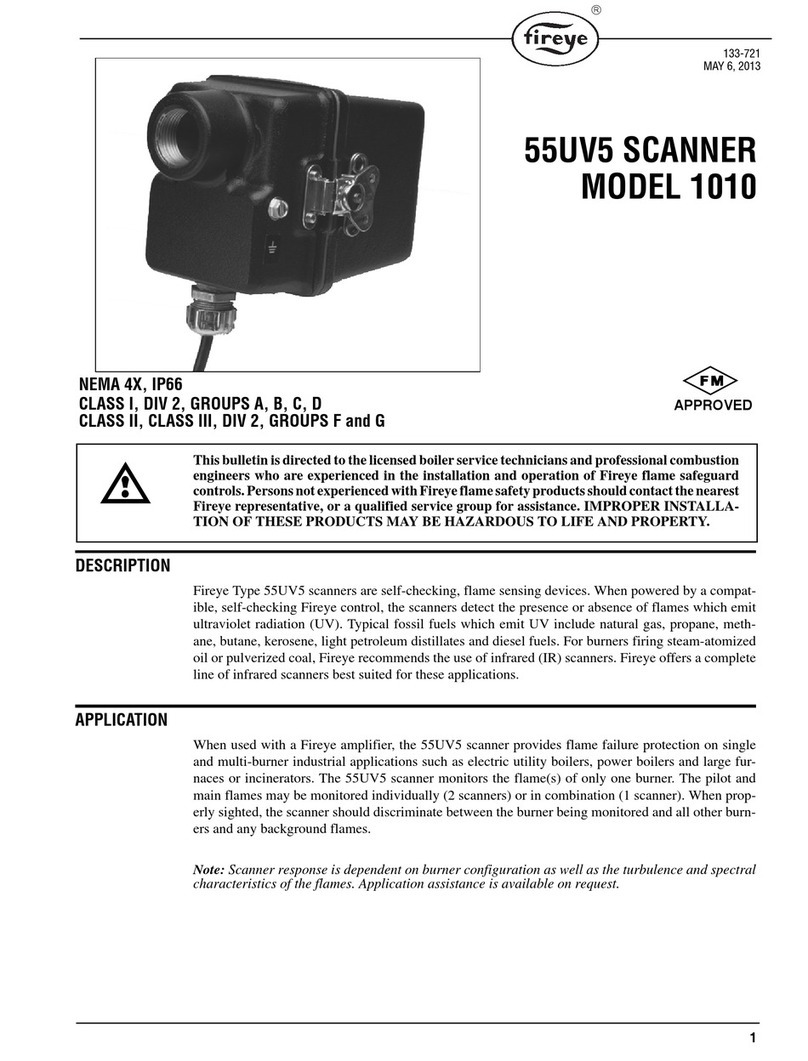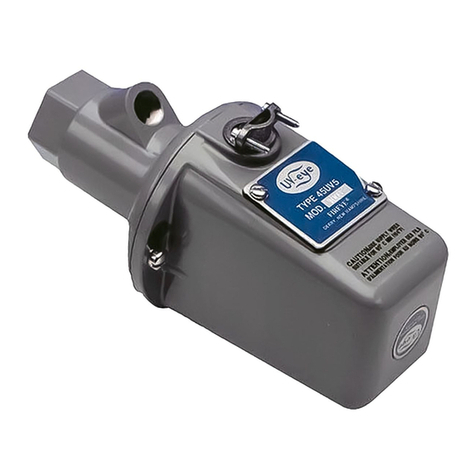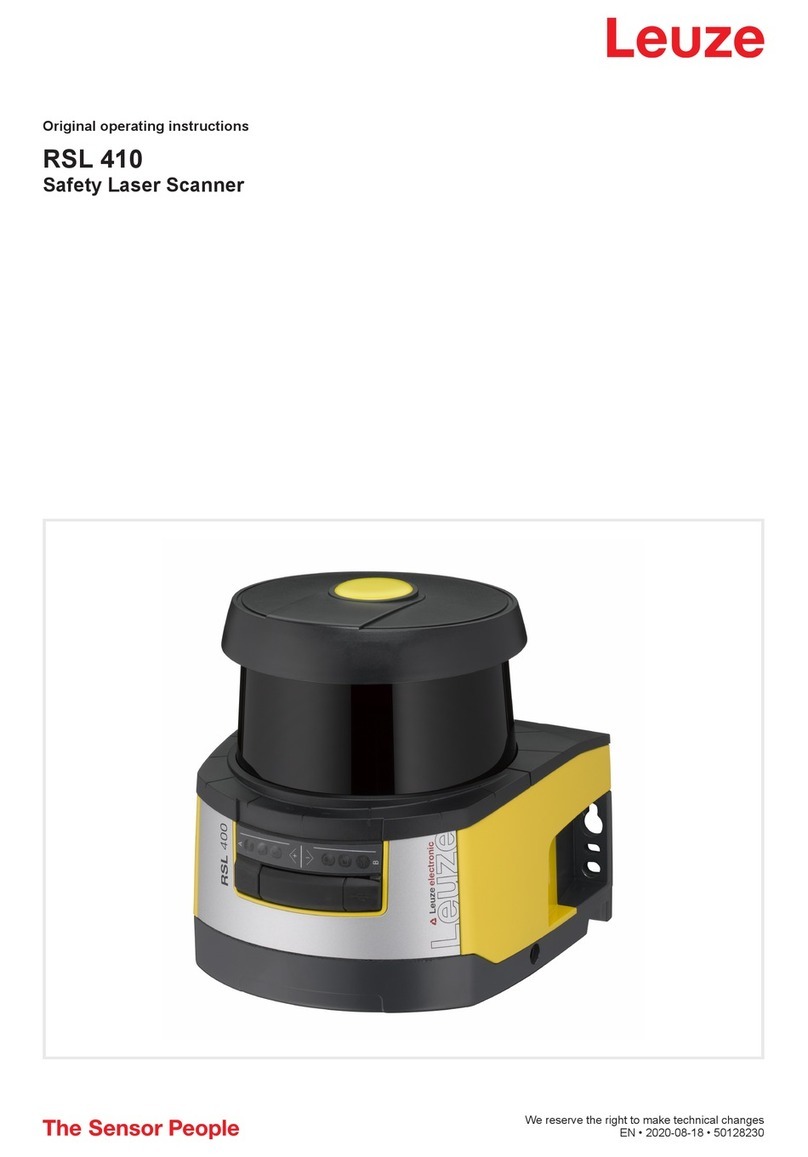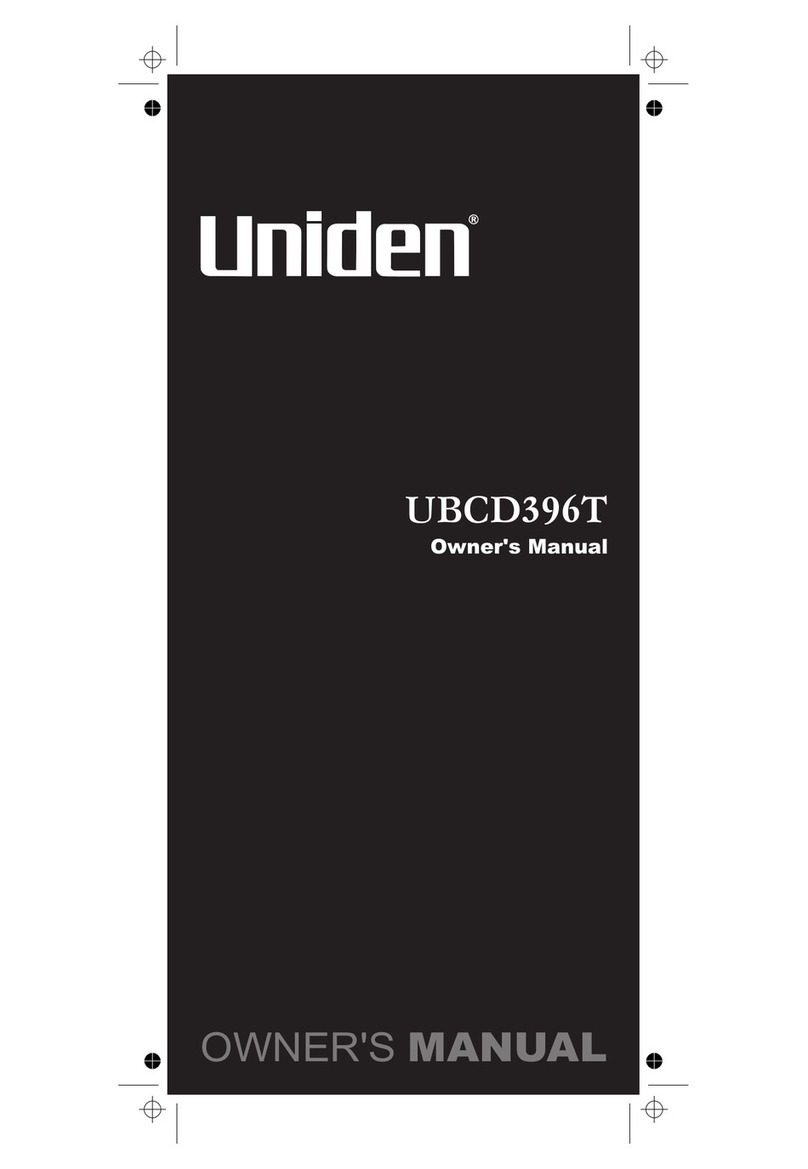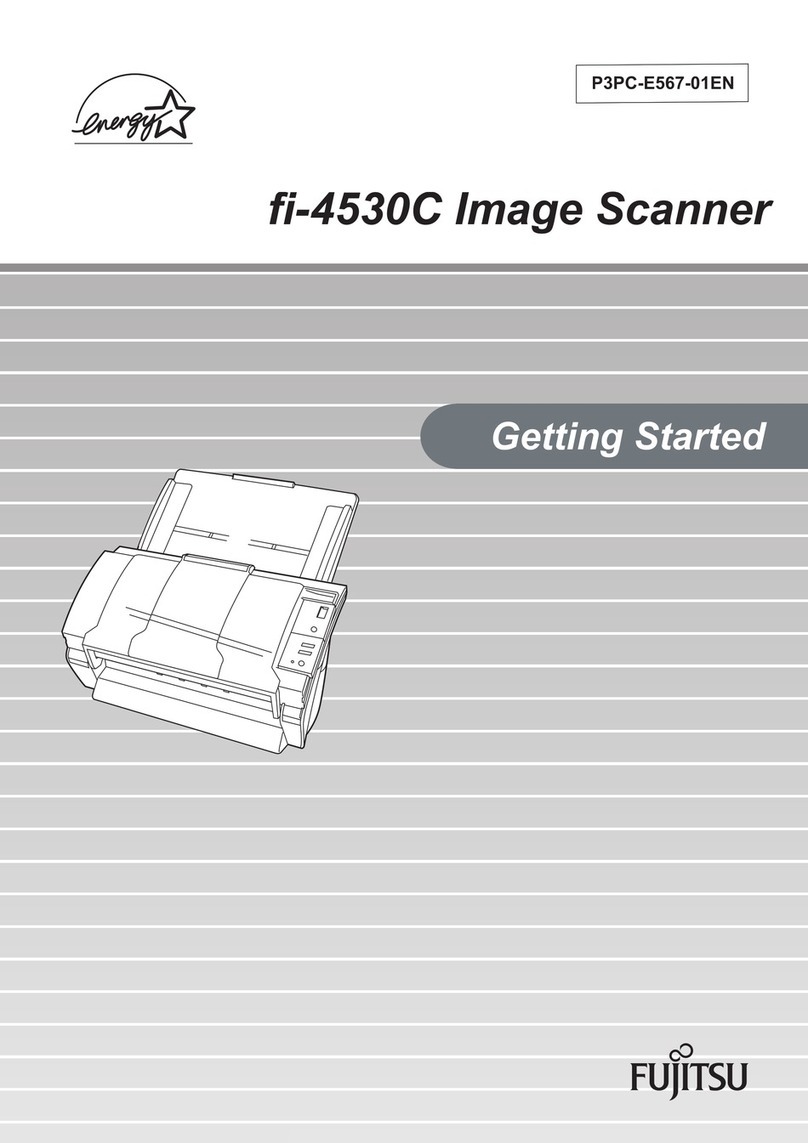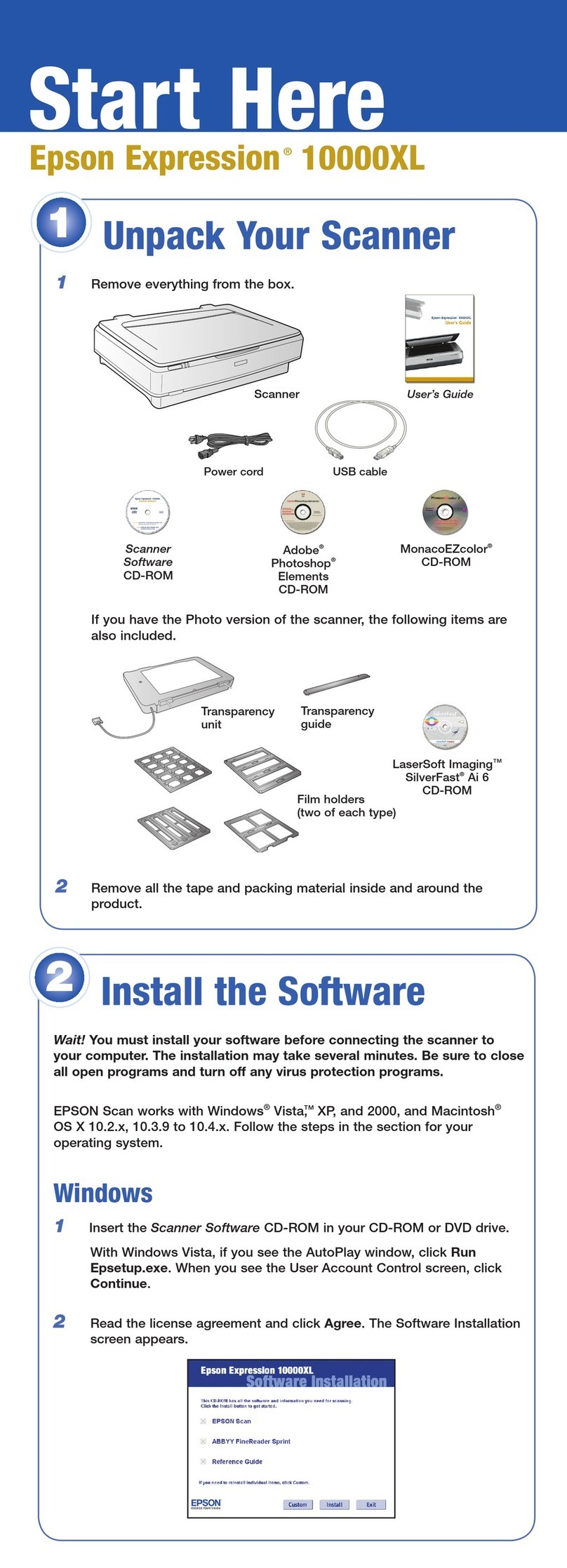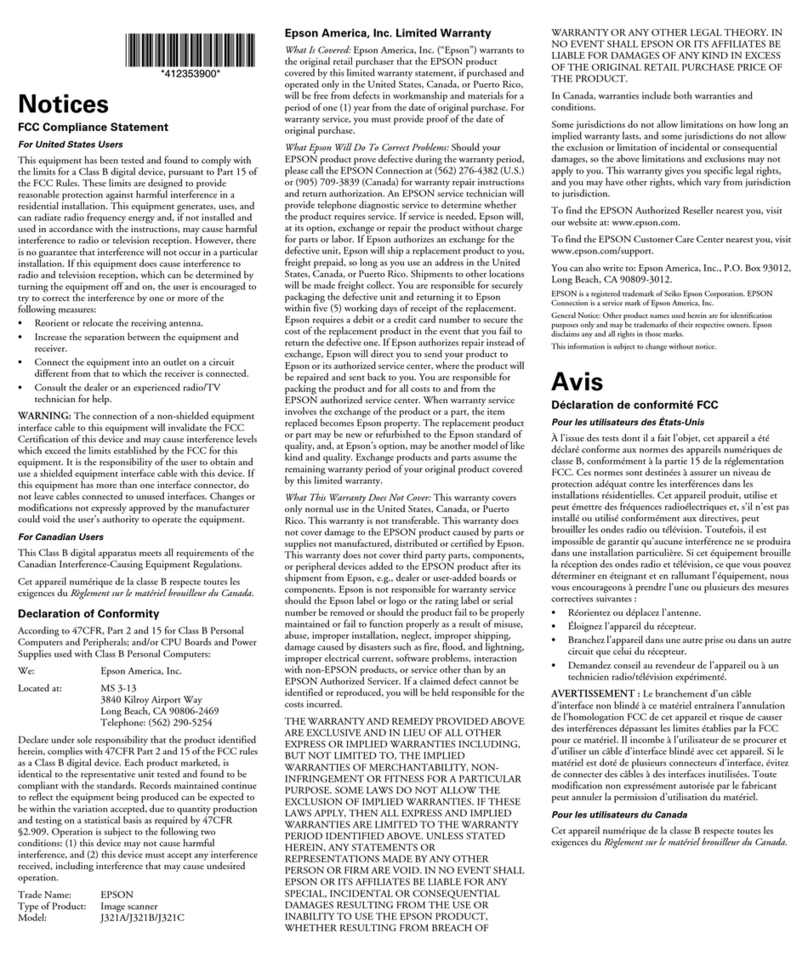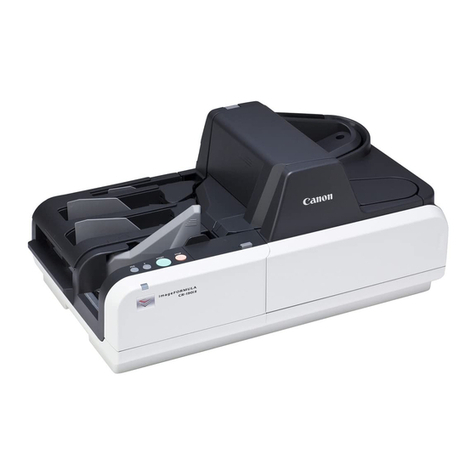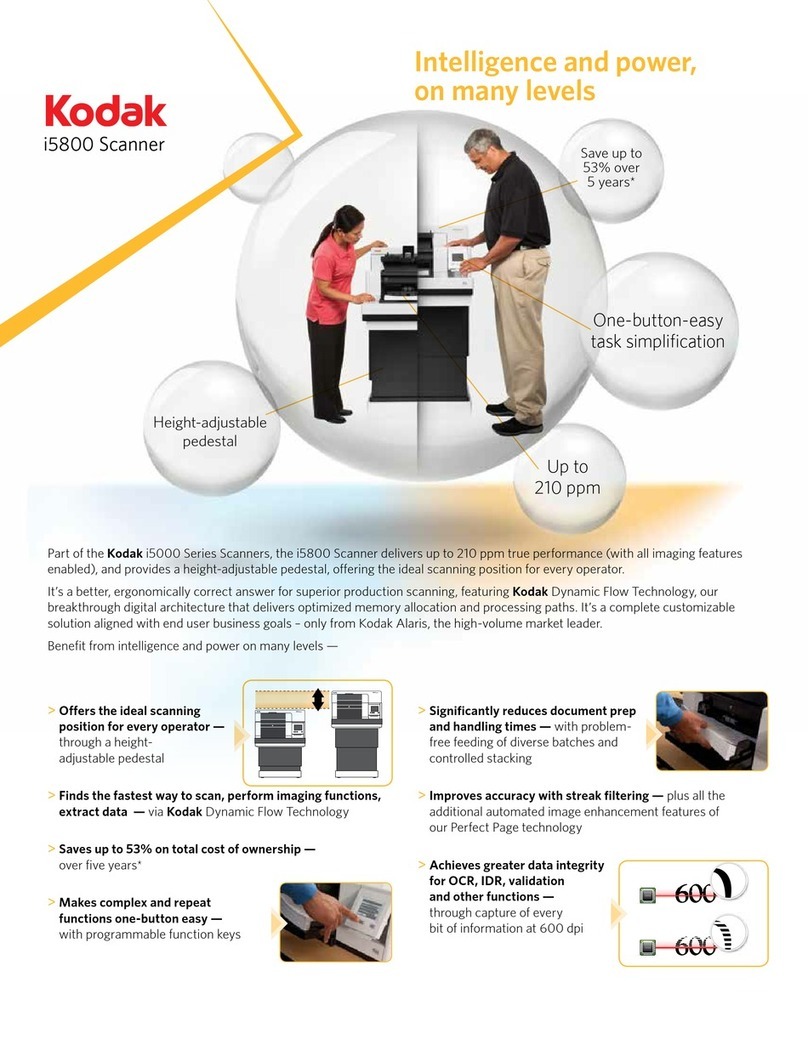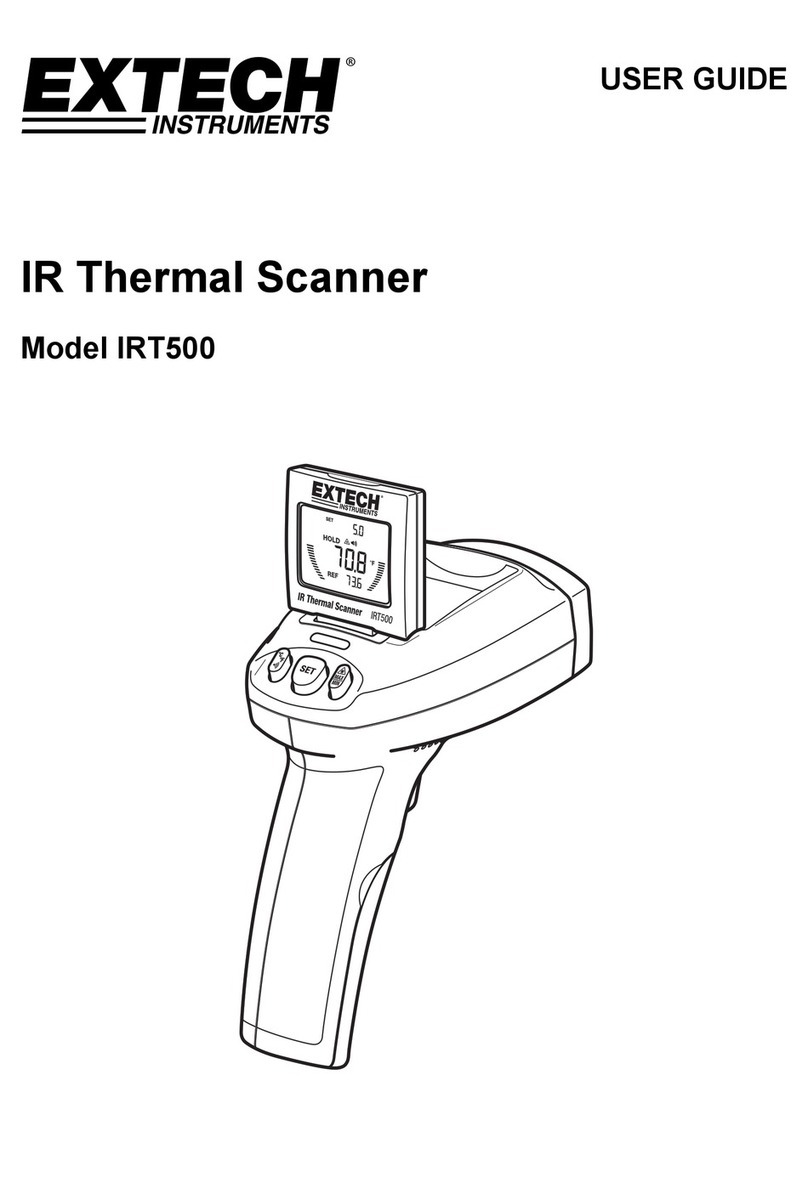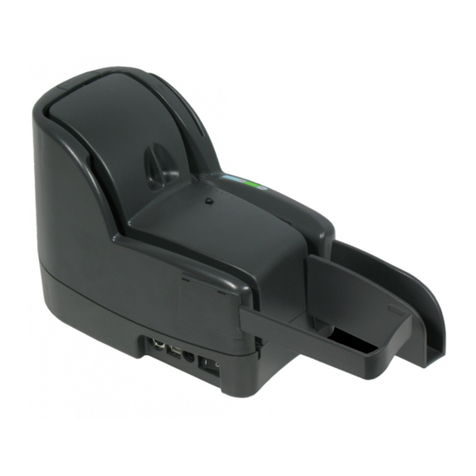Fireye 65UV5-1000 User manual

1
®
DESCRIPTION
The Fireye 65UV5 flame scanner is a microprocessor based flame scanner utilizing an ultraviolet
tube-type sensor and an electro-mechanical self-checking shutter mechanism. The Fireye 65UV5
flame scanner incorporates an internal flame relay with a fixed ON/OFF threshold thereby eliminat-
ing the need for an external flame amplifier.
The 65UV5 scanner is available with a one-second or four second flame failure response time
(FFRT) depending on the model selected. The “E” versions are one second FFRT, the non-”E”ver-
sions are four seconds FFRT. The Fireye 65UV5-1004, -1004E flame scanner provides an analog 4
to 20 mA output referenced to flame signal strength.
The Fireye 65UV5 flame scanner is powered from a 24 Vdc power source provided externally and
includes an integral 10-foot (3 meter) cable. A color-coded internal LED indicates flame status and
alarm condition. This can be viewed through a viewing port on the rear cover.
The 65UV5 housing has a NEMA 4X / IP66 rating. The unit is suitable for use in Class 1, Div. 2 haz-
ardous environment groups A, B, C & D or Ex II3 G/D Ex nA IIC T4A.
65UV5 CEX models are wired directly via a terminal rail located within the CEX housing. Suitable
glands must be used to terminate the cable at the housing.
Note: The 65UV5-1000, -1000E scanners became obsolete in 2008, and were replaced by the
enhanced capability of the 65UV5-1004 and -1004E scanners.
APPLICATION
Fireye 65UV5 self-checking scanners are used to detect ultraviolet emissions from fossil fuel flames
such as natural gas, coke oven gas, propane, methane, butane, kerosene, light petroleum distillates
and diesel fuels.
PRINCIPLE OF OPERATION
The 65UV5 scanners use a UV-eye detector. This detector is a sealed, gas filled, UV-sensitive tube
containing two electrodes connected to a source of DC voltage. When UV radiation of sufficient
energy falls upon the electrodes, electrons are released and the inter-electrode gas becomes conduc-
tive, resulting in an electric current flow from one electrode to the other. The current flow starts and
ends abruptly and is known as an “avalanche.”
A very intense source of UV radiation will produce several hundred avalanches or pulses per second.
With less radiation there will be fewer pulses per second. Upon total disappearance of flame, the
detector output ceases. Thus, the presence or absence of pulses is an indication of the presence or
absence of flame; the frequency of the pulses is a measure of flame intensity. When the pulses reach
a sufficient level, the internal flame relay is energized.
65UV5 Simplicity
Integrated Flame Scanner
with Internal Flame Relay
CU-104
MARCH 28, 2013

2
FEATURES
The components are contained in a cast aluminum NEMA 4X/IP66 housing sealed with an oil-resis-
tant gasket. The quartz lens is a planoconvex design, resulting in increased sensitivity. Also included
in the scanner is an electromagnetic shutter that permits a self-checking circuit to verify that the
scanner and signal circuits are producing valid flame presence or absence information. During the
shutter closed period, the detector’s optical path is blocked from flame radiation, allowing the inter-
nal microprocessor to verify the proper operation of the ultraviolet tube. While the shutter is open,
flame presence or absence is detected. The self-check shutter operation and fault diagnostics are fully
described later in this bulletin.
SPECIFICATIONS
FIGURE 1. DIMENSIONS (65UV5-1000 shown)
SPECIFICATIONS TABLE
Table 1:
MOUNTING THREADS AGENCY APPROVALS
SCANNER MODEL SIGHT PIPE
CONNECTION, 1”
COOLING AIR
CONNECTION, 3/4”
FM DIN CERTCO DIN-DVGW CE ULC FLAME FAILURE
RESPONSE TIME
65UV5-1000 NPT NPT X 4 Sec.
65UV5-1000E BSP BSP X X X X 1 Sec.
65UV5-1004 NPT NPT X X 4 Sec.
65UV5-1004E BSP BSP X X X X X 1 Sec.
65UV5-1000ECEX BSP BSP 1 Sec.
65UV5-1004ECEX BSP BSP X X X 1 Sec.
TYPE 65UV5
4.87" (123.67mm)
3.93" (99.82mm)
4.74"
(120.4mm)
7.39" (187.58mm)
2.07" (52.45mm)
1.18" (29.85mm)
1" NPT OR 1" BSP THREAD
3/4" NPT OR 3/4" BSP THREAD
0.2" (6mm)

3
®
SPECIFICATIONS (non CEX versions)
MECHANICAL:
Housing Material: Cast aluminum with black polyester powder coat finish
Housing Weight: 4 lbs (2kg)
Environmental: NEMA 4X, IP66
Hazardous Classifications: Class I, Division 2, Groups A, B, C & D, Class II, III, Division 2,
Groups F and G
Ex II 3 G/D Ex nA IIC T4A
Mounting: Model 1000: 1" NPT female pipe mount with 3/4" NPT female
cooling air connection
Model 1000E: 1" BSP female pipe mount with 3/4" BSP female
cooling air connection
Model 1004: 1" NPT female pipe mount with 3/4" NPT female
cooling air connection
Model 1004E: 1" BSP female pipe mount with 3/4" BSP female
cooling air connection
Cooling / Purge Air Requirements:
Source: Clean, dry, cool
Volume: 4 SCFM (113 l/min) at 3/4" threaded mounting flange, or 1 inch “Y”
fitting, mounted on scanner sight pipe. Temperature near the upper
limit of the scanner operating range and/or use with dirty/dusty fuels
may require up to 15 SCFM (425 l/min).
Pressure: Adequate to overcome furnace or windbox pressure
Temperature Rating: -40° F to + 150°F (-40°C to +65°C)
Humidity: 0% to 95% relative humidity, non-condensing
ELECTRICAL:
Input Power: 24 Vdc, + 20% / - 25%, 3.8 Watts
Electrical Connection: Cable gland and 10 ft (3m) of captive cable
Relay Output FLAME RELAY, (N.O.) / (N.C.) SPDT
FAULT RELAY, (N.O.) SPST
Contact Rating: Minimum: 1 mA @ 5 Vdc
Maximum: 2 A @ 30 Vdc
2 A @ 240 Vac
Status Indication: Internal LED: “Flame Signal”, “Fault Indication”
Analog Output: 4-20 mA DC current, referenced to 24 Vdc common, maximum
connected load 750 ohms
INTEGRAL CABLE SPECIFICATION:
Cable Specification: P/N 59-536
Multi-core 8 conductor, color coded, #18 AWG wires and overall braided shield.
Nominal O.D. = .38” (9.6 mm)
RoHS Compliant
Cable Jacket: PVC jacket,
Meets UL PLTC Class 1, Div 2, no conduit required.
UV resistant, Oil resistant.
Temperature Rating: -40 °C to 105 °C
CAUTION: Spring fasteners should be clipped and tightened to ensure a good bond to
housing and maintain the integrity of the NEMA 4X rating.

4
SPECIFICATIONS (CEX MODEL)
FIGURE 2. SIMPLICITY SCANNER in CENELEC HAZARDOUS AREA HOUSING (mounting flange kit ordered separately)
NOTE: All models of the Simplicity 65UV5-1004 CEX flame scanners are housed within an ATEX
approved housing for application in Exd IIC T6 hazardous rated environment. In addition the ATEX
housing is designed to meet the requirements of IP66 (NEMA 4X).
SPECIFICATIONS (CEX MODEL)
MECHANICAL:
Hazardous Classifications:
Exd IIC T6 ATEX
Cooling / Purge Air Requirements:
Source: Clean, dry, cool
Volume: 4 SCFM (113 l/min) at 3/4" threaded mounting flange, or 1 inch “Y” fitting,
mounted on scanner sight pipe. Temperature near the upper limit of the scanner operating
range and/or use with dirty/dusty fuels may require up to 15 SCFM (425 l/min).
Pressure: Adequate to overcome furnace or windbox pressure
Temperature Rating: -40° F to + 150°F (-40°C to +65°C) maximum dependent on “T”
classification
Humidity: 0% to 95% relative humidity, non-condensing
ELECTRICAL:
Input Power: 24 Vdc, + 20% / - 25% supply current 100 mA
Electrical Connection: Internal terminal rail
Relay Output FLAME RELAY, (N.O.) / (N.C.) SPDT
FAULT RELAY, (N.O.) SPST
Contact Rating: Minimum: 1 mA @ 5 Vdc
Maximum: 2 A @ 30 Vdc
2 A @ 240 Vac
Status Indication: Internal LED: “Flame Signal”, “Fault Indication”
Analog Output: 4-20 mA DC current, referenced to 24 Vdc common, maximum
connected load 750 ohms
*HOUSING FLANGE KIT, ORDERED SEPARATELY
(INCLUDES NPT OR BSP FLANGE, GASKET, MOUNTING SCREWS)
P/N 129-168-1 (NPT)
P/N 129-168-2 (BSP)
DIMENSIONS IN INCHES (MM)
ASSEMBLY SHOWN WITH HOUSING FLANGE KIT, ORDERED SEPARATELY
MOUNTING SCREWS (4 PLC.)
3/8" THREADED OPENING FOR COOLING AIR
1" FEMALE THREAD
SIGHT PIPE MOUNT
*HOUSING FLANGE KIT
FLANGE GASKET
0.35 (9)
4.41
(112)
5.28
(134)
8.94 (227)
4.53 (115) 4.41 (112)
3.56 (90)
FOR WIRING INSTRUCTIONS REFER TO FIGURE 3 3/4” NPT THREADED OPENING FOR CABLE ENTRY

5
®
INSTALLATION
The best scanner sighting results are obtained when the scanner is aimed so that its line of sight inter-
sects the burner center line at a slight angle, as shown in Figure 3. The area of maximum ultraviolet
radiation is near the base of the flame envelope. When only one scanner is used per burner, the inter-
section should be made so the line of sight or viewing angle can also see the pilot flame. Consider-
ation must be given to burner secondary air rotation (some burners have clockwise air rotation and
others counter-clockwise). Figure 3 illustrates how scanner location is influenced by the pilot posi-
tions and secondary air circulation. Physical obstructions such as air register blades should not fall in
the line of sight of the scanner.
FIGURE 3.
1. AN ACCEPTABLE SCANNER LOCATION MUST ENSURE THE FOLLOWING:
— Reliable pilot flame detection.
— Reliable main flame detection.
— Rejection of pilot flame too short or in the wrong position to ignite the main flame reliably,
thus prohibiting main fuel admission.
NOTE: Reliable signals must be obtained at all air flows and furnace loads (ranges of fuel firing).
FIGURE 4.
2. If combustion air enters the furnace with a rotational movement of sufficient velocity to deflect
pilot flame in direction of rotation, position the scanner 0 to 30 degrees downstream of the pilot
burner and close to the periphery of the throat where the ultraviolet radiation is at a maximum.
(See Figures 3 and 4).
3. Having determined an appropriate location for the sight tube, cut a clearance hole for a 2 inch
pipe through the burner plate. If register vanes interfere with the desired line of sight, the inter-
fering vane(s) should be trimmed to assure an unobstructed viewing path at all firing levels, see
Figure 4.
PRIMARY
COMBUSTION
AIR REGISTER
BLADES
SCANNER
LINE OF
SIGHT
BURNER
THROAT
FLAME
ENVELOPE
SINGLE BURNER SCANNER SIGHTING
BURNER
CENTER LINE
BASE
ZONE
IGNITOR
SCANNER
MAIN BURNER
CCW ROTATION
IGNITOR
SCANNER
MAIN
CW ROTATION
BURNER
SCANNER LOCATION VS. SECONDARY AIR ROTATION

6
4. Mount scanner sight pipe by either:
— Centering a Fireye No. 60-1664-3 (NPT) or 60-1664-4 (BSP) swivel mount over the hole
and installing the sight pipe on the swivel mount,
or
— Inserting the end of the sight pipe into the hole, aligning the pipe to the desired viewing
angle and tack weld. (Welding must be adequate to temporarily support the weight of the
installed scanner). The sight pipe should be arranged to slant downward so that the dirt and
dust will not collect in it.
FIGURE 5.
5. When a satisfactory sighting position has been confirmed by operational test, (see section on
alignment), the sight pipe should either be firmly welded in place or, if the swivel mount is used,
the base position should be secured by tightening the three hex head cap screw located on the
swivel mount ring. In certain older style swivel mounts, tack welding may be required.
6. Excessive flame signal can affect flame discrimination and prevent the control connected to the
scanner from performing properly. To reduce the signal level of the tube, or improve flame dis-
crimination, orifices may be installed to decrease the scanner’s field of view and reduce its sen-
sitivity. Installation of the orifice disk is shown in Figure 11.
7. The scanner viewing window must be kept free of contaminants (oil, smoke, soot, dirt) and the
scanner temperature must not exceed its maximum rating. Both requirements will be satisfied by
continuous injection of purge air.
The scanner mounting may be made with provision for purge air through the 3/4” opening as shown
in Figure 6, Item A or C, or through a 1" tee/wye connection as shown in Figure 6, Item B. Normally
only one of the two connections is provided with purge air and the other is plugged. When a Fireye
coupling is used as shown in Figure 6, the 1" tee/wye connection is used for the purge air (plug 3/4”
opening).
Under normal temperature conditions, with clean burning fuels and moderate ambient temperature
conditions, purge air flow of approximately 4 SCFM (113 L/min) is generally adequate. A 0.1 psig
positive pressure difference between the atmosphere and boiler pressure measured at right angle to
the purge air flow, should result in a purge air flow of 4 SCFM. Up to 15 SCFM (425 L/min) may be
required for fuels that may produce high levels of smoke of soot or for hot environments to maintain
scanner internal temperature within specifications.
NOTE: The maximum viewing field of the lens is one inch per foot. Do not use more than one foot of
one inch sight pipe. Increase sight pipe diameter one inch for every additional foot of sight pipe
length used, to avoid restricting the scanner’s field of view. Temperature in the scanner housing
should not exceed those temperature limits listed in the specifications. Excessive temperatures will
shorten scanner life.
BUT THISNOT THIS NOT THIS
FLAME MUST COMPLETELY COVER SIGHT OPENING
WARNING: Sighting position of the flame scanner should insure that the scanner does not
respond to the ignition spark.

7
®
FIGURE 6.
SCANNER WIRING
Non-CEX versions of the 65UV5 scanner include an integral 10-foot (3-meter) cable. A four con-
ductor cable is provided for the -1000 and -1000E (Fig. 7), while an eight conductor cable is pro-
vided for the -1004 and 1004E ( Fig. 8), see scanner wiring diagram for connection details.
The 65UV5-1004 and -1004E cable is not to be flexed at temperatures lower than -25°C.
#60-1664
1” SWIVEL MOUNT
#35-127
HEAT INSULATING NIPPLE
STANDARD MOUNTING
AIR ENTRY
(PURGE AND
COOLING)
#60-1664
1” SWIVEL MOUNT
#35-127
HEAT INSULATING NIPPLE
MOUNTING FOR
HIGH TEMP.
APPLICATIONS
COOLING AIR/ENTRY
1” SIGHT PIPE
(BY OTHERS)
ALTERNATE MOUNTING
(NOT ADJUSTABLE)
#60-1664
1” SWIVEL MOUNT
#35-127
HEAT INSULATING NIPPLE
#60-1199-1 (NPT)
#60-1199-2 (BSP)
SEALING COUPLING WITH QUARTZ
WINDOW. REQUIRED WHEN SCANNER LENS IS
EXPOSED TO EXCESSIVE PRESSURE
FURNACE OR WINDBOX PRESSURE
APERTURE
#53-121
#60-1664
1” SWIVEL MOUNT
RETAINER
#34-181
COOLING AIR/ENTRY
(PURGE AND COOLING)
“WYE” #35-200 (NPT)
“WYE” #35-239 (BSP)
A
B
D
C
“WYE” #35-200 (NPT)
“WYE” #35-239 (BSP)
AIR ENTRY
(PURGE AND
COOLING)
AIR ENTRY
(PURGE AND
COOLING)
1” UNION
#35-127
HEAT INSULATING NIPPLE
1” UNION
#35-127
HEAT INSULATING NIPPLE
1” UNION
#35-127
HEAT INSULATING NIPPLE
1” SIGHT
PIPE
(BY OTHERS)
CEX MOUNTING
1” UNION
#35-127
WARNING: Unit should be electrically protected by external fuses (see Fig. 7 and Fig. 8 for
rating) to prevent damage to unit in case of a short or overload.

8
FIGURE 7. SCANNER WIRING FOR 1000 AND 1000E SCANNER VERSIONS
FIGURE 8. SCANNER WIRING FOR 1004 AND 1004E SCANNER VERSIONS
65UV5-1000 (E) SCANNER
FLAME
SAFETY GROUND SCREW
24VDC
INPUT
BLACK
BLACK
RED
RED 24VDC SUPPLY
(POLARITY NOT IMPORTANT)
TO BURNER MANAGEMENT
SYSTEM
RELAY
SAFETY
RELAY
1 AMP SLOW BLOW*
2 AMP SLOW BLOW*
*EXTERNAL FUSES
SCANNER MUST BE CONNECTED TO GROUND
(NOTE 3)
BLUE
ORANGE
FLAME
RELAY
OUTPUT
INTERNAL
GROUND
CONTACT
24 VDC
INPUT
POWER
BLACK
WHITE -
RED
BROWN +
GREEN
YELLOW
ANALOG
OUTPUT
FAULT
RELAY
EARTH
GROUND
65UV5- 1004, -1004E SCANNER
INPUT
SUPPLY
24 VDC (NOTE 1)
SUPPLY 5 VDC
TO 230 VAC (NOTE 2)
(1 AMP SLOW BLOW)
(2 AMP SLOW BLOW)
VOLTAGE = NO
FAULT CONDITION
(NOTE 4)
FLAME OFF
FLAME ON
(NOTE5)
(NOTE 6)
FLAME STRENGTH
EARTH
GROUND
*
*
*EXTERNAL FUSE
(-)
(+)
CABLE COLOR CODES AND DESCRIPTIONS
BLUE = Relay voltage input (5 VDC to 230 VAC, 1 mA to 2000 mA) fused
BLACK = Safety Relay voltage output (voltage output when no error)
RED = No flame present ( voltage output when no flame)
YELLOW = Flame is present (voltage output when flame is present)
ORANGE = 4-20 mA flame strength output (not safety critical)
GREEN = EARTH GROUND
BROWN = 24 Volt supply (+)
WHITE = 24 Volt supply return (-)
NOTES:
1. Fireye recommends the use of power supply 60-2685 -25, -50
2. Suitable signal voltage provided by BMS
3. All relay contacts are shown in their shelf state (unpowered).
4. Fault Relay contact is closed whenever scanner is powered and no fault condi-
tion exists.
5. Flame OFF contact opens when flame is detected.
6. Flame ON contact closes when flame is detected.
4 TO 20 mA
(NOTE 3)
(NOTE 3)

9
®
Note: When the older generations of 65UV5-1000 or -1000E scanners are used for a Class 1, Div. 2
application, the cable gland MUST be removed and replaced with P/N 129-149, liquid tight cable
gland, so that liquid tight flexible conduit (Anaconda Sealtight ® 1/2" Type H.T.V.A or equivalent,
available at any electrical supply outlet) can be inserted over the existing cable. The newer genera-
tion 65UV5-1004 and 1004E utilize a special cable that is approved for use in a Class 1, Div. 2 area
without the use of the flexible conduit.
SCANNER WIRING - CEX VERSIONS
CEX models contain two internal four-pole terminal blocks for the user to connect their scanner
cable. The terminal blocks are identified by the internal wire color code and functions as described in
Table 2 and Figure 9 below.
The installer must use a suitable EX cable gland or conduit fitting at the CEX housing's ¾" NPT
threaded cable entry opening.
To reduce electrical noise interference, take precautions to keep the scanner cable away from any
high inductive wiring associated with high inductive loads or high voltage, high energy spark igni-
tion systems.
Table 2: WIRING OF SIMPLICITY MODEL 65UV5-1004 “CEX” SCANNERS
Note: 4-20mA negative connection should connect to the power supply negative wire (white).
TERMINAL INTERNAL WIRE
COLOR CODE FUNCTION
TERMINAL BLOCK 1
( RELAY CONTACT CONNECTIONS)
1 RED FLAME RELAY (N.C.)
2 BLACK FAULT/ FLAME RELAY (COM)
3 BLUE FAULT RELAY (N.O.)
4 YELLOW FLAME RELAY (N.O.)
TERMINAL BLOCK 2
(POWER CONNECTIONS)
5 WHITE 24 VDC (-) SUPPLY
6 BROWN 24 VDC (+) SUPPLY
7 GREEN EARTH GROUND
8 ORANGE 4-20 mA OUTPUT (+)
ALTERNATE LIQUID
TIGHT CONNECTION
WARNING: Unit should be electrically protected by external fuses (see Fig. 7 and Fig. 8 for
rating) to prevent damage to unit in case of a short or overload.

10
FIGURE 9. 65UV5-1004 “CEX” INTERNAL WIRING - COLOR CODE
SELF-CHECK SHUTTER OPERATION
The 65UV5 self-check shutter mechanism is a powered-open, powered-closed device (no return
spring). The open/closed shutter period is variable and controlled by the scanner’s microprocessor.
Upon initial 24 vdc power application, the shutter will close and open once to verify proper opera-
tion. The shutter will then remain open until a UV flame source is present and the internal flame
relay (RF) is energized.
When the flame relay (RF) is energized, the shutter will be driven closed once every 12 seconds. The
amount of time the shutter will remain closed is determined by the scanner’s microprocessor and is
dependent upon the UV tube’s response. The amount of time closed can vary between 50 ms and 300
ms.
In the event of a self-check failure the flame relay will de-energize.
INDICATION LEDs
The 65UV5 contains a color coded internal LED that indicates flame status and alarm condition per
the following table. View LED through lens on back of housing. Refer to Fig. 12 for LED location.
Table 3:
LED STATUS CONDITION FLAME
RELAY (RF)
STATUS
*SHUTTER POSITION
OPEN CLOSED
GREEN OFF NO FLAME DETECTED OFF
ONCE PER
SECOND
FLASHING
RATE
MARGINAL FLAME SIGNAL ON
RAPID
FLASHING
RATE
NORMAL FLAME SIGNAL ON
STEADY ON HIGH FLAME SIGNAL ON
RED OFF NORMAL ON
FLASHING *SELF-CHECK FAILURE
(observe shutter position)
OFF SHUTTER
FAILURE
UV TUBE
FAILURE
ON MICROPROCESSOR ERROR OFF
TERMINAL BLOCK 1
FRONT
(Lens
End)
(Relay Contact Connections)
Note: Connect scanner cable shield to ground lug.
RED
(1)
BLACK
(2)
BLUE
(3)
YELLOW
(4)
GROUND
LUG (Note 1)
TERMINAL BLOCK 2
FRONT
(Lens
End)
(Power Connections)
Product
Label
(5)
WHITE
(6)
BROWN
(7)
GREEN
(8)
ORANGE

11
®
FIGURE 10.
ALIGNMENT AND ADJUSTMENT
The following procedures are recommended to ensure optimum flame detection and discrimination.
Flame discrimination is the ability to see only one burner or one pilot with other burners or pilots
operating nearby. These procedures should be used whenever parts are replaced, when the scanner
has been moved, when the flame shape is altered (additional fuels, new burners, burner/register mod-
ifications) as well as on all new installations.
Pilot Flame Scanner
1. Apply power to scanner.
2. Start pilot.
3. Adjust scanner sighting to detect pilot flame in the manner shown in Figure 4.
4. When flame is properly sighted, the flame signal relay should energize and the internal LED
should be indicating Flame Signal (see table 3).
5. Make sure that the scanner does not respond to the ignition spark. This is accomplished by cut-
ting off the fuel to the pilot and attempting to start the pilot using the spark igniter. If the system
responds to the spark, the sighting should be realigned.
Main Flame Scanner
1. Apply power to scanner.
2. Start pilot.
3. Adjust scanner sighting so that ignition spark and pilot flame are not detected. Test should be
conducted with maximum pilot flame and with both minimum and maximum airflow.
4. Start main burner.
5. Adjust scanner sighting to detect main burner flame. When sighting is correct (see above), the
flame relay should energize and the internal LED should be indicating Flame Signal (see table
3).
LED LOCATION VIEWING LENS
CAUTION: Ensure scanner does not respond to the ignition spark.
CAUTION: Minimum pilot is the minimum flame required to satisfactorily ignite the main
burner. Be sure to test for reliable signals under maximum airflow conditions when the
pilot may not be detected outside the line of sight. If this occurs, resighting is required.

12
6. When proper signal is established, manually close off the main burner fuel supply. When burner
flame becomes unstable or is extinguished, the flame relay should de-energize and the internal
LED should be off.
7. Start an adjacent burner and vary its firing rate under normal airflow conditions. Make certain
that the main flame scanner on the burner not in service does not respond to adjacent burner
flame. Readjust sighting if necessary.
ACCESSORIES
Swivel Mount
The scanner swivel mount P/N 60-1664-4 (BSP) or 60-1664-3 (NPT) is used to adjust the scanner
sighting angle after the scanner has been installed. The swivel mount is used as indicated the figures
in this document.
Orifices
The Orifice restricts the field of view (target area), reduces air flow, maintains air flow, maintain air
block, and increases discrimination between flame and background radiation. The orifice is secured
within the ball of a swivel mount with an orifice retainer or the orifice can be placed within a one
inch union (not provided).
The scanner should ideally sight a target area of 4 to 25 square inches (25-150 cm2) of the flame
front. The flame front is a plane within the combustion space separating the region of unburned fuel
from the burning fuel.
Note: There is an inverse relationship between discrimination and sensitivity.
Table 4:
Heat Insulating Nipple
The heat insulating nipple P/N 35-127-3 (BSP) or 35-127-1 (NPT) prevents heat transfer from the
hot sight pipe to the scanner head.
Sealing Coupling with Quartz Window
The sealing coupling (60-1199-x) is used whenever a coupling or seal is required for scanner piping.
The size is one inch US standard taper pipe thread (1" NPT). The sealing coupling has a quartz win-
dow to block off the scanner from the furnace pressure and heat. When the sealing coupling is used,
the 1" tee/wye is used for the purge air inlet. Be sure the quartz window is properly seated to seal off
the scanner. Do not over-tighten coupling collar because damage to the window may result. For best
results, hand tighten coupling collar.
FIGURE PART
NUMBER
DESCRIPTION
14 53-121 Orifice Kit Contains the Following:
14A 53-121-2 Orifice .062” Diameter
14B 53-121-3 Orifice .078” Diameter
14C 53-121-4 Orifice .093” Diameter
14D 53-121-5 Orifice .109” Diameter
14E 53-121-6 Orifice .125” Diameter
14F 53-121-7 Orifice .187” Diameter
14G 53-121-8 Orifice .250” Diameter
14H 53-121-9 Orifice .375” Diameter
14I 53-121-10 Orifice .50” Diameter
14J 34-181 Orifice Retainer

13
®
FIGURE 11.
MAINTENANCE
1. The control and scanner should be powered at all times (except for repair, cleaning or replace-
ment) to reduce any harmful effects of atmospheric humidity.
2. The scanner and sight pipe must be kept clean to prevent overheating and assure optical quali-
ties.
3. When replacing or cleaning the UV tube, note the position of the tube pins. They are mounted
on a rectangular base so that the tube can only be inserted into the socket with the electrodes
broadside to the shutter window.
4. Clean the quartz lens and tube with glass detergent or glass cleaning agents which contain no
abrasives. After cleaning, remove all cleaning films with a soft lint-free cloth. (Some cleaning
films may reduce or filter UV).
5. Use original FIREYE parts to maintain optimum operation, see table 5.
ALTERNATE PURGE
AIR SUPPLY
1” UNION
3/4” PLUG
OR PURGE
AIR SUPPLY
FIELD
OF
VIEW
1” SWIVEL MOUNT
FIELD OF VIEW
BALL
SWIVEL MOUNT
ORIFICE ORIFICE
RETAINER
CAUTION: DISCONNECT OR SHUT OFF ELECTRIC POWER WHEN WORKING
ON SCANNER.

14
FIGURE 12.
FIGURE 13.
Table 5:
RECOMMENDED SPARE PARTS
Part Number Description
4-290-1 UV Tube
61-6974 Shutter Assembly
002608-001 Flange Gasket
002611-001 Scanner Lens
101537-001 Lens Retaining Ring
107427-006 Lens O-Ring (2 required)
UV TUBE
SHUTTER SECURING SCREWS SHUTTER
LENS,
RETAINER,
O-RINGS (2)
FLANGE
GASKET
SHUTTER
CONNECTOR

15
®
FIGURE 14.
FIGURE 15.
A. THROUGH I. ORIFICES .062 DIA TO .5 DIA
J. 34-181 ORIFICE RETAINER
K. 35-127-1 (NPT) HEAT INSULATING NIPPLE
35-127-3 (BSP) HEAT INSULATING NIPPLE
L. 92-48 QUARTZ WINDOW (for 61-1199 Sealing
Coupling shown in Fig. 15.
A. 60-1664-3 (NPT) SWIVEL MOUNT
60-1664-4 (BSP) SWIVEL MOUNT AB
B. 60-1199-1 (NPT) SEALING COUPLING W/QUARTZ WINDOW
60-1199-2 (BSP) SEALING COUPLING W/QUARTZ WINDOW

16
NOTICE
When Fireye products are combined with equipment manufactured by others and/or integrated into
systems designed or manufactured by others, the Fireye warranty, as stated in its General Terms and
Conditions of Sale, pertains only to the Fireye products and not to any other equipment or to the
combined system or its overall performance.
WARRANTIES
FIREYE guarantees for one year from the date of installation or 18 months from date of manufacture
of its products to replace, or, at its option, to repair any product or part thereof (except lamps, elec-
tronic tubes and photocells) which is found defective in material or workmanship or which otherwise
fails to conform to the description of the product on the face of its sales order. THE FOREGOING
IS IN LIEU OF ALL OTHER WARRANTIES AND FIREYE MAKES NO WARRANTY OF
MERCHANTABILITY OR ANY OTHER WARRANTY, EXPRESS OR IMPLIED. Except as
specifically stated in these general terms and conditions of sale, remedies with respect to any product
or part number manufactured or sold by Fireye shall be limited exclusively to the right to replace-
ment or repair as above provided. In no event shall Fireye be liable for consequential or special dam-
ages of any nature that may arise in connection with such product or part.
FIREYECU-104
3 Manchester Road MARCH 28, 2013
Derry, New Hampshire 03038 USA Supersedes October 11, 2012
www.fireye.com
This manual suits for next models
5
Table of contents
Other Fireye Scanner manuals
Popular Scanner manuals by other brands
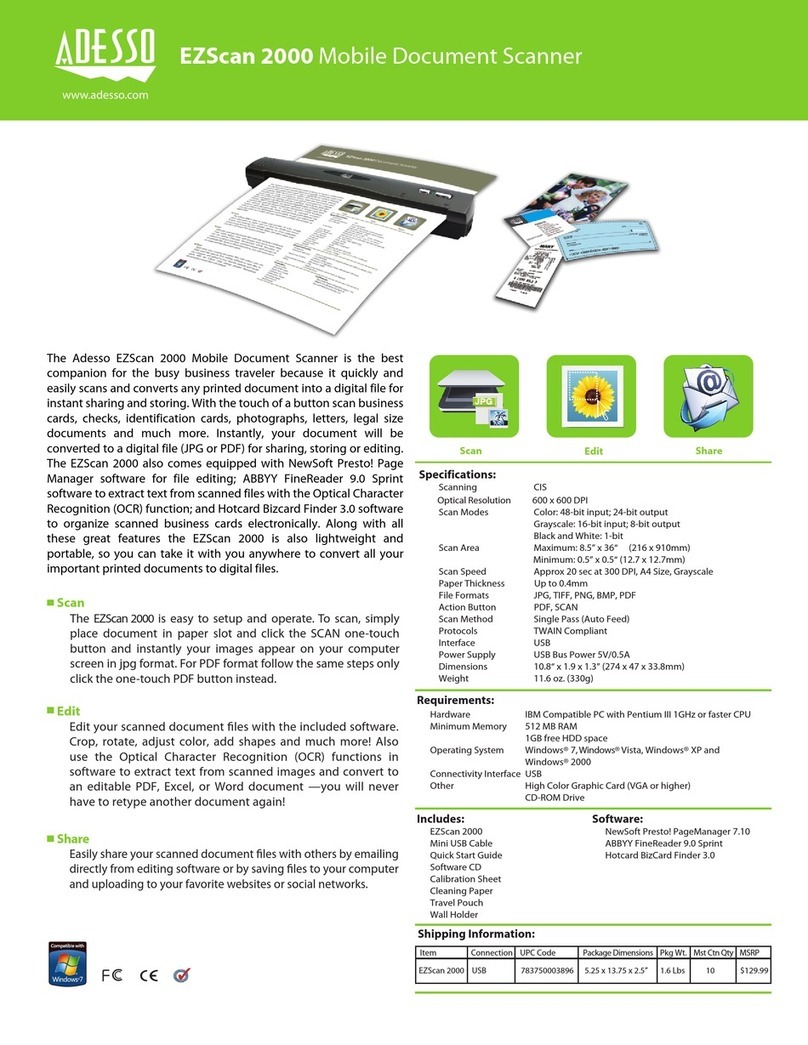
Adesso
Adesso EZScan 2000 Specifications
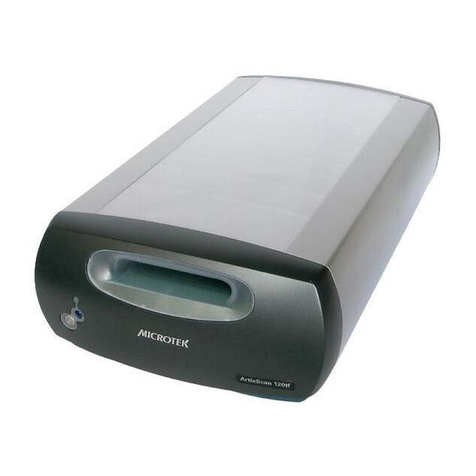
Microtek
Microtek ArtixScan 120tf Specifications
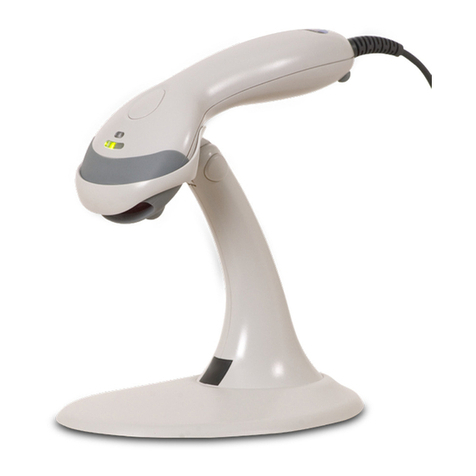
Metrologic
Metrologic MS9524 VoyagerPDF Series Installation and user guide
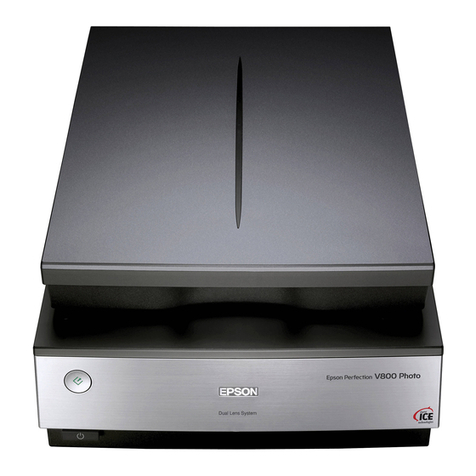
Epson
Epson Perfection V800 Photo user guide
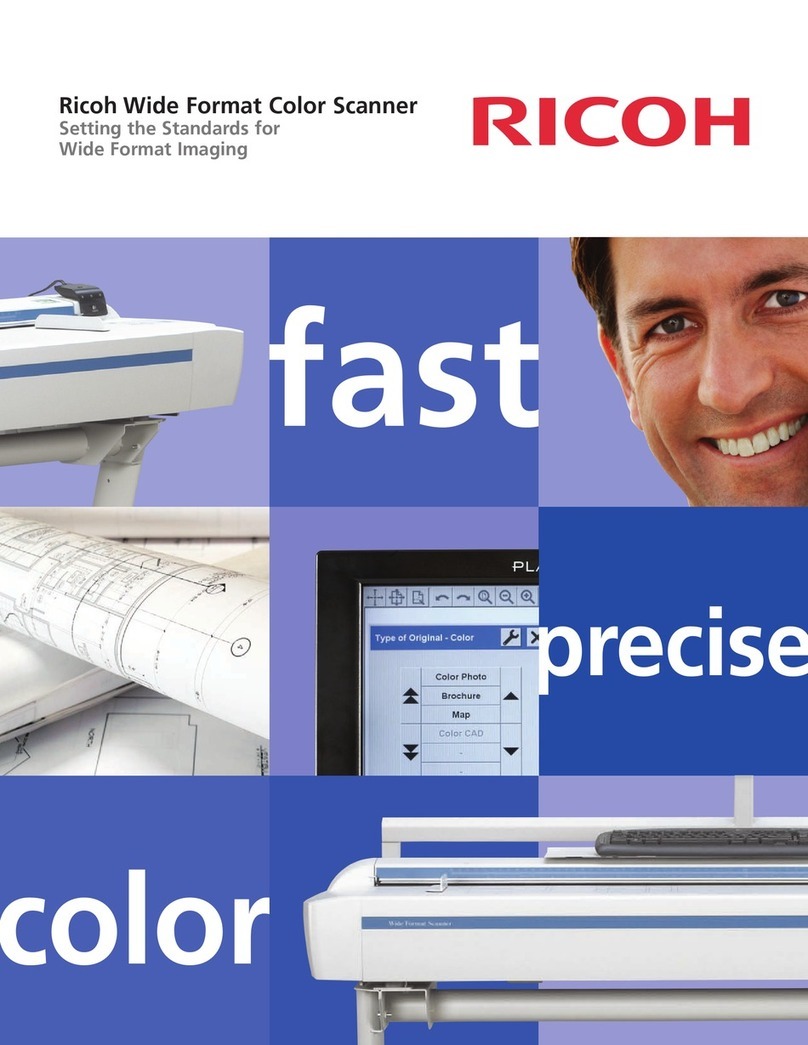
Ricoh
Ricoh Wide Format Color Scanner Brochure & specs
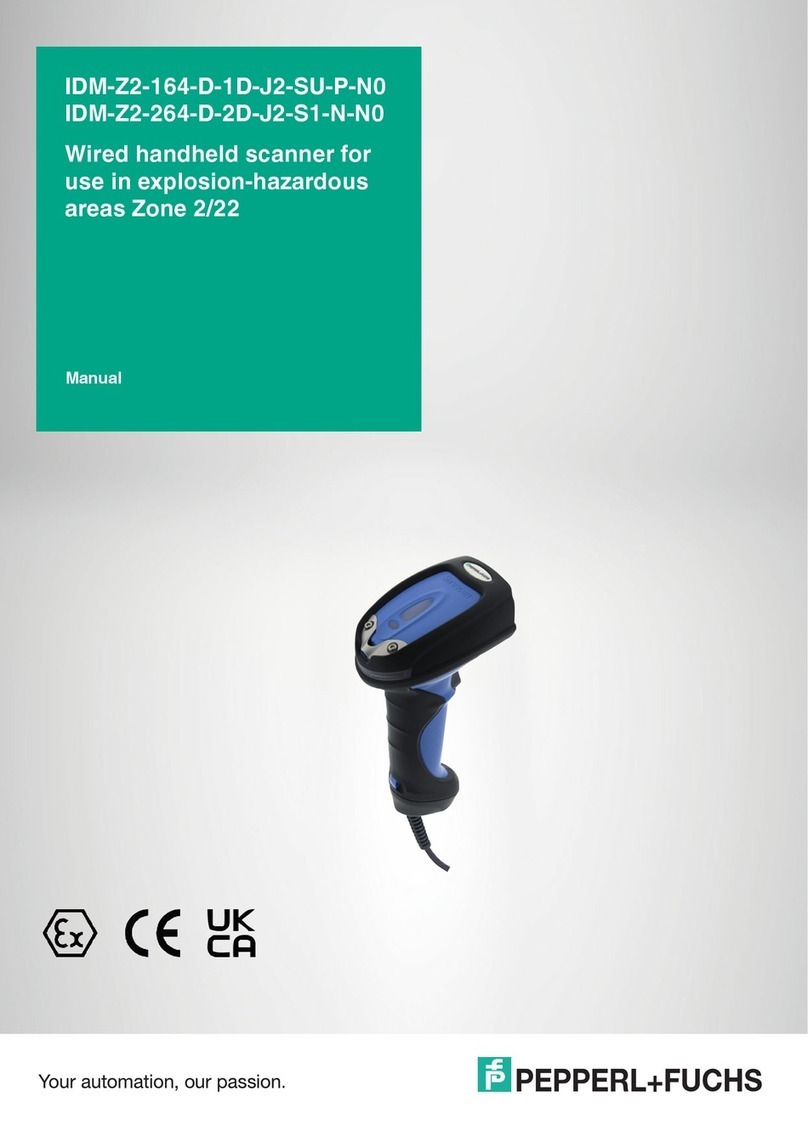
Pepperl+Fuchs
Pepperl+Fuchs IDM-Z2-164-D-1D-J2-SU-P-N0 manual
